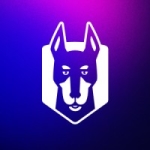What is our primary use case?
We primarily use Datadog for:
- Native memory
- Logging
- APM
- Context switching
- RUM
- Synthetic
- Databases
- Java
- JVM settings
- File i/o
- Socket i/o
- Linux
- Kubernetes
- Kafka
- Pods
- Sizing
We are testing Datadog as a way to reduce our operational time to fix things (mean time to repair). This is step one. We hope to use Datadog as a way to be proactive instead of reactive (mean time to failure).
So far, Datadog has shown very good options to work on all of our operational and development issues. We are also trying to use Datadog to shift left, and fix things before they break (MTTF increase).
How has it helped my organization?
We are currently in a POC and do not own Datadog at the moment.
So far, there have been a few issues due to security. There are two main security issues.
The first is moving data off-prem. This has been resolved to a point (filtering logs, etc). However, there is still an issue with moving a JFR as a JFR potentially contains data that is not allowed off-prem.
The second security issue is more internal, however, the main installation requires root access or using an ACL. Our company does not use ACLs on our Linux platform. This is problematic since the install sets a no-login on the Datadog user.
What is most valuable?
The most valuable aspects of the product include the APM and profiler.
These two have given us insights into things that are very difficult to track down given the standard OS (Linux) tools.
The native memory tracking is super difficult to see exactly where it comes from. I attended a course (continuous profiling), and it showed me the potentially very important capabilities.
If you add these details to a standard dashboard, or a sub-dashboard for techy people, or even just a notebook, it would be easy to identify issues before they occur.
Combining these details with the basic tools (infra, logging, APM, and good rules), Datadog can easily show the details that a true engineer would need. It isn't just for monitoring, however, I see the value in it for engineers.
What needs improvement?
I have done every training offered (and in a short period of time: two days for 20 courses).
I find the training great. That said, it is set for the LCD (lowest common denominator). Of course, this is very helpful to sell the product, yet, to really utilize the product, you need to get more detailed.
If I did the training as it is written and I cut/paste a bunch of stuff and see the cut/paste work, I didn't really learn anything. Later sessions (I quit using the editor and switched to VI) stopped cutting and pasting, and learned much more.
For how long have I used the solution?
I've used the solution for one month.
What do I think about the stability of the solution?
I' give stability a thumbs up.
What do I think about the scalability of the solution?
We are not sure yet in terms of scalability. The off-prem solution seems to scale well (although had issues with the training slowing down).
How are customer service and support?
Technical support is great.
How would you rate customer service and support?
Which solution did I use previously and why did I switch?
I previously used Dynatrace and Elastic. We didn't switch. We are in a POC.
How was the initial setup?
The initial setup is simple yet complex. There are too many teams are needed.
What about the implementation team?
We did the initial setup in-house.
What was our ROI?
In terms of ROI, the labor saving is probably the biggest. The NPR is probably second - although management would probably reverse these.
What's my experience with pricing, setup cost, and licensing?
Pricing and licensing is fairly complicated. A GB for .1 sounds great, however, once you put all 16 or so prices together, it adds up fast. A cost model sheet on the main site would be very helpful.
Which other solutions did I evaluate?
We are currently in a POC.
What other advice do I have?
We work with all product versions.
Which deployment model are you using for this solution?
On-premises
If public cloud, private cloud, or hybrid cloud, which cloud provider do you use?
Microsoft Azure
Disclosure: My company does not have a business relationship with this vendor other than being a customer.



















